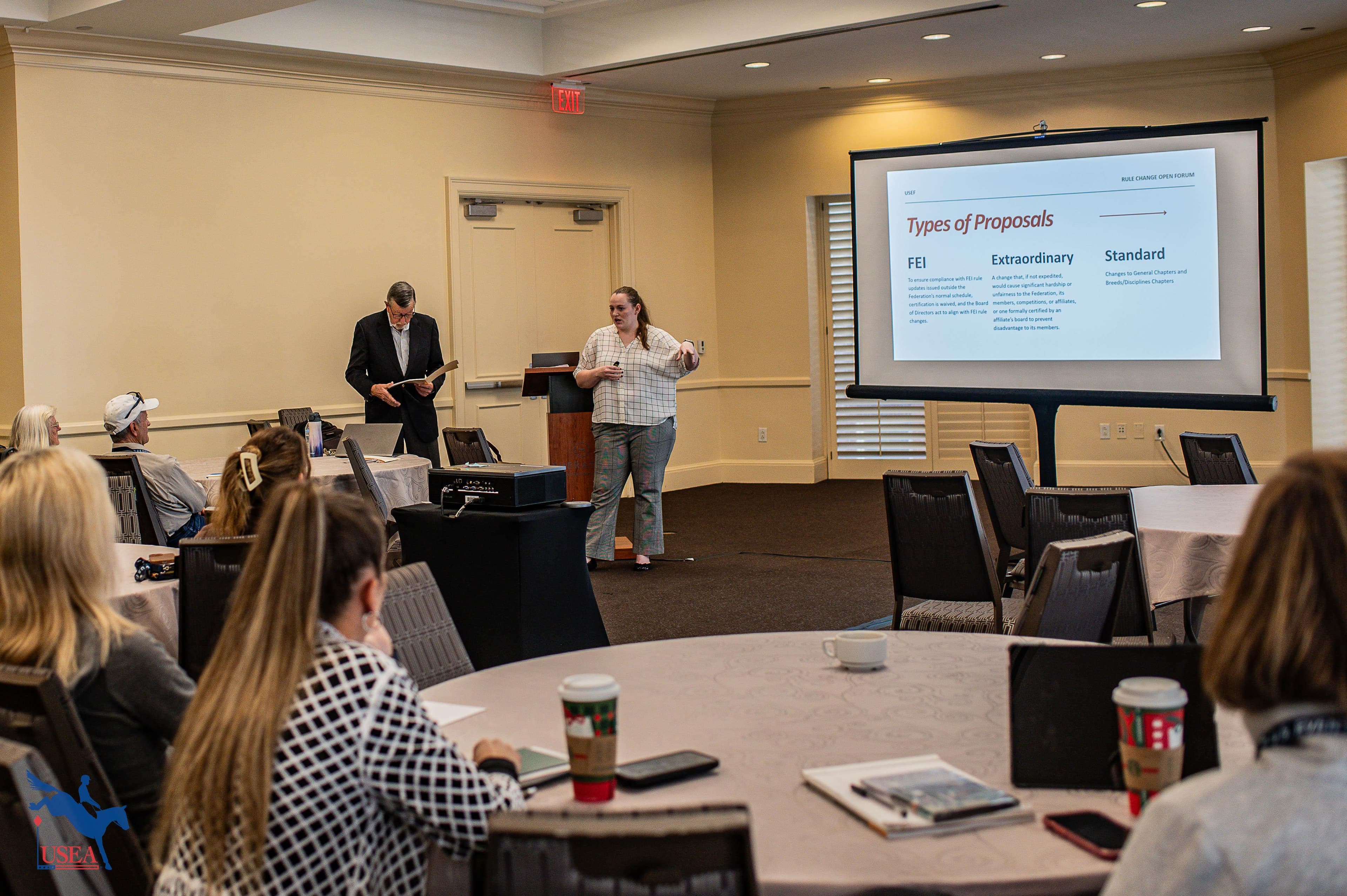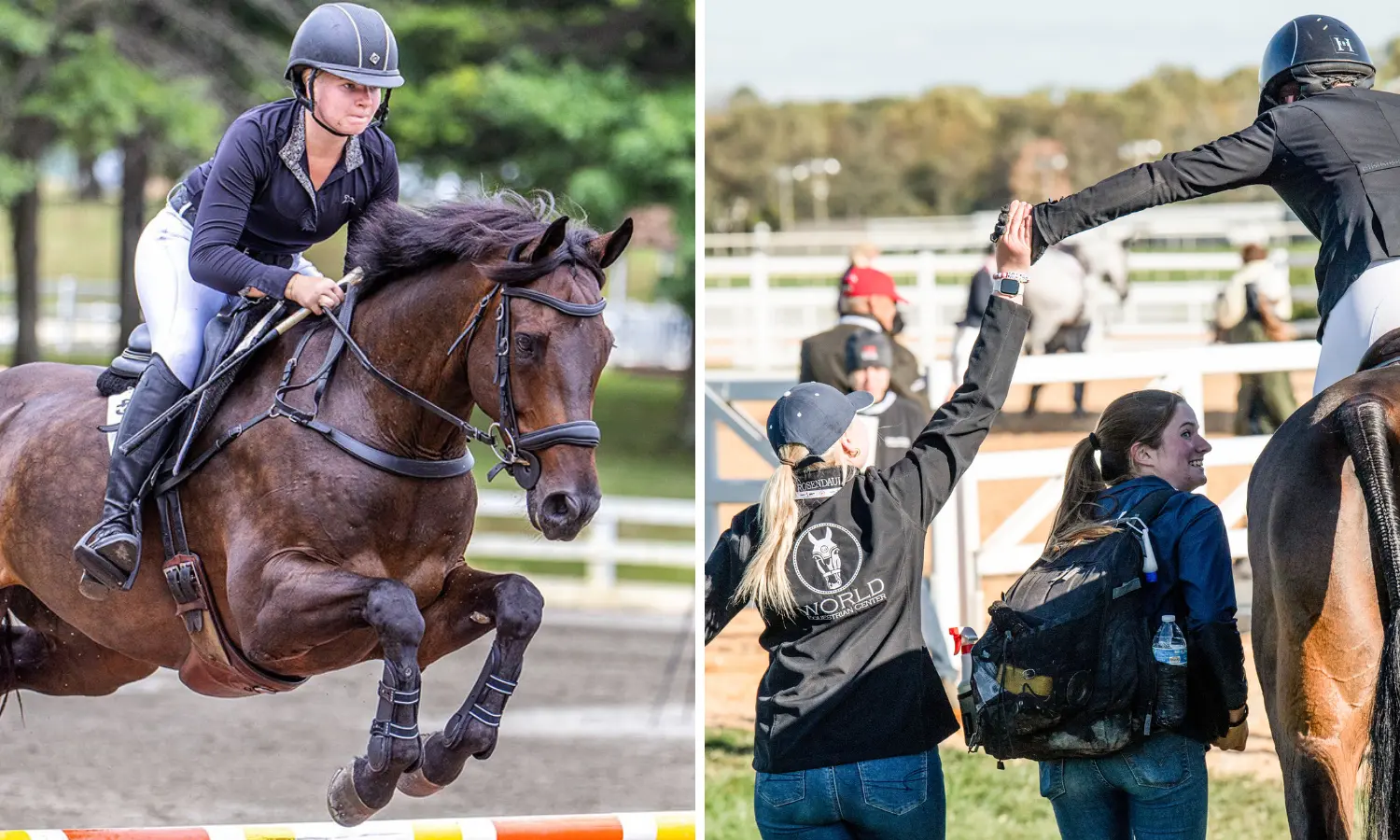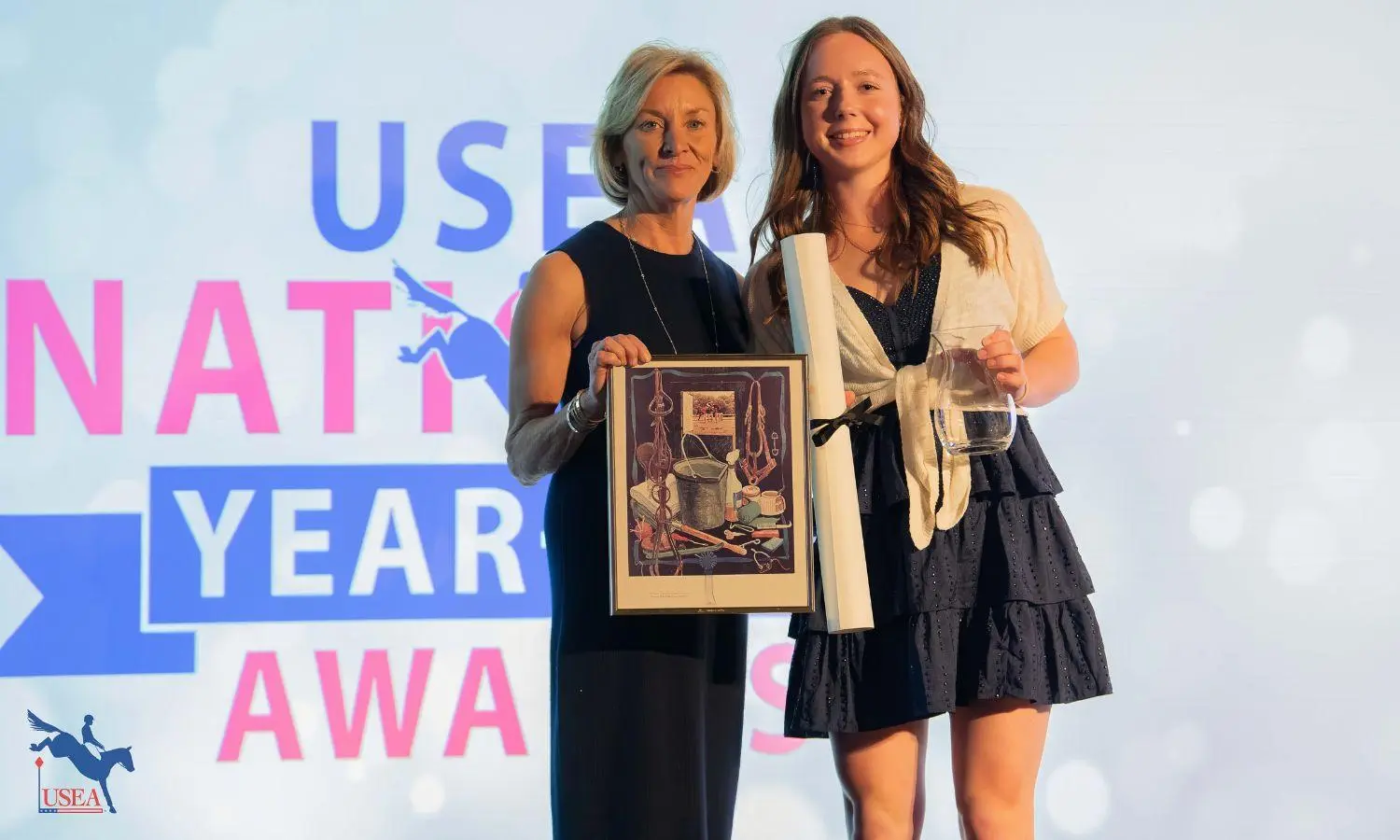Grid Pro Quo with Holly Hudspeth
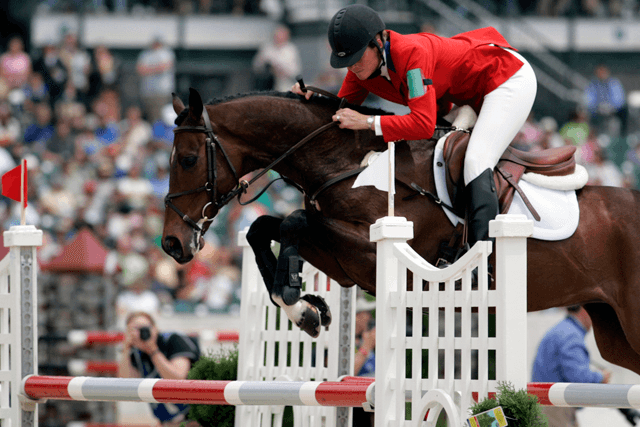
Don't let winter weather get you down. Use the off season as an opportunity to fine tune your riding! In this winter weekly web series, we will revive past Grid Pro Quo articles from our magazine, Eventing USA, to help you brainstorm ways to keep you and your horse in tip-top shape even if you only have access to an indoor arena.
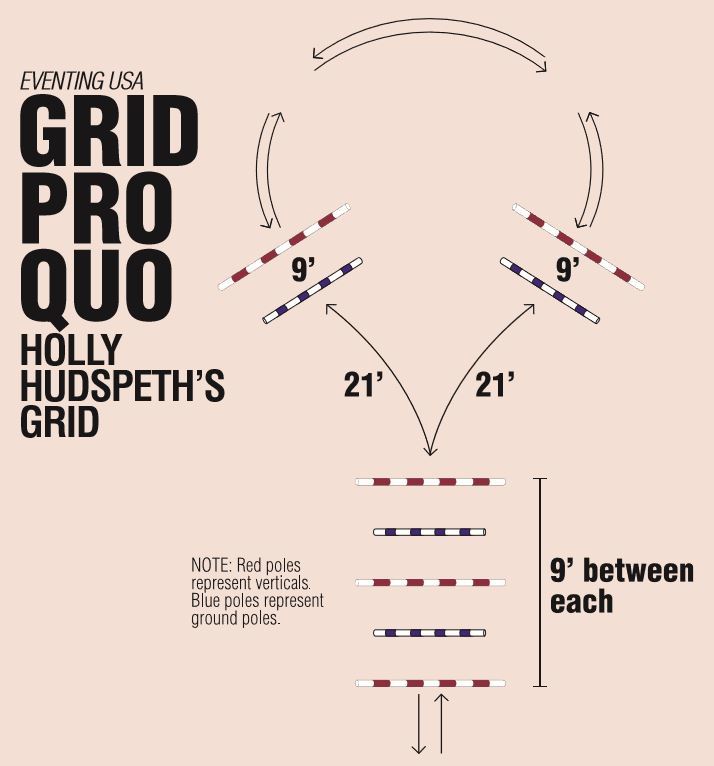
Why:
This is one of my favorite exercises that I use quite a bit at home. I like to incorporate turning exercises into my jump schools as I believe that it creates a more active rider. It can be tough to learn to properly turn while jumping without losing the quality of the canter or your own position. This exercise is harder than it seems at first glance. As a rider, you cannot be passive through this exercise; you have to stay strong both mentally and physically. You have to mentally plan ahead and keep thinking about your next jump, your next turn, and how you are going to get from one to the other. Physically, you have to stay strong through your core so that you do not become unbalanced through the turns.
Like most traditional grids, this exercise does not have to be big to be effective. Keep the fences to a level below your competition level. Even my Advanced horses will only get up to 3’3” or 3’6”. The great thing about this exercise is that you can build up a little course that works for you and your horse. Whether you are just starting out and leave all the rails on the ground or you create a complex course, there is something to do for every pair at every level.
How:
Before starting any jump school, I like my students to accomplish a few things on the flat first. I have them do a bit more at the canter while warming up because the canter is the one gait that we use in all three phases. To make sure that the canter is both rideable and adjustable, I will have them spiral in and out on a circle and go forward and back within the gait. My goal is to make sure that they have all the necessary tools to make adjustments while working through the jumping exercise. For greener horses and riders, start with rails on the ground. Work through the different patterns at the trot, which allows both the rider and horse to settle into the exercise before they start jumping. If your horse is not very adjustable and shows resistance through the turns, open the rein and get your horse to follow your hand with their head and neck. You can practice this on a simple circle, and you should find that this is much more effective than pulling the bit through their mouth.
Once the riders are easily trotting through the exercise, I will have them canter the two single fences on a figure eight pattern. For the greener pairs, these poles can be left on the ground, but for more experiences horses, start with small verticals. Once you have your horse’s jump muscles warmed up, move on to the centerline gymnastic.
To start off, canter the centerline gymnastic away from the single fences. This way the horses do not think that they will ever go through the centerline and go straight past the single fences. This saves confusion later on when you start asking them to make a bending line from the gymnastic to the single fences. Depending on the level of the horse and rider, start off with small verticals or even small cross rails. If I start off with cross rails, I like to try to progress to small verticals before moving on to the next step.
This exercise is harder than it looks, so spend extra time in the beginning of the jump school spelling things out, which will pay off later on as you start to make things more complicated. Once the horses have figured out the footwork required for the centerline gymnastic, start to put some small courses together. Ride the centerline and then bend right or left and come back through the centerline and then bend the opposite direction. Before moving on, you should be able to easily make the turn from the centerline to a single fence without the horse showing any resistance. Once this is accomplished, ride the centerline, bend to a single fence, and then circle around to the opposite single fence and then back through the centerline.
For the riders, the biggest thing is to work on the quality of the canter. Do they have control? Is there a good balance? Having control and balance is the key to having a successful jump school. I encourage my students to be patient and take their time. If at any point the balance or control is lost, take a step back and work to reestablish it, even if this means putting the poles back down on the ground.
About Holly Hudspeth
Based at Equiventure Farm in Rougemont, North Carolina, Holly Hudspeth has competed through the CCI4* and represented the U.S. at the 2003 Pan American Games. Since moving to the East Coast from her home in Minnesota, Holly has worked with some of the country’s best trainers, including Ralph Hill, David O’Connor, Karen O’Connor, and Phillip Dutton. Holly also coached the Area 8 Young Riders Team from 2003-2010. From 2004 to the present, Holly has produced many horses and riders through the top levels. To learn more about Holly, please visit her website.

